What if aloe blossoms? Horticulturists teach you how to pollinate and bear seeds
In rainy weather, I believe that whether it is aloe or tile Reed, there will be some flowers and arrows. Today, when exchanging the experience of aloe with a friend, I found that some aloe players refer to the pollination experience of tile Reed (12 volumes) when pollinating aloe, and there are not a few fine pollination posts of Reed in the forum. All kinds of methods are available, and we can choose what we like to refer to and practice. However, aloe vera and shark paw are not some of the mainstream succulent plants of Cyperaceae, and there are relatively few materials in various aspects.
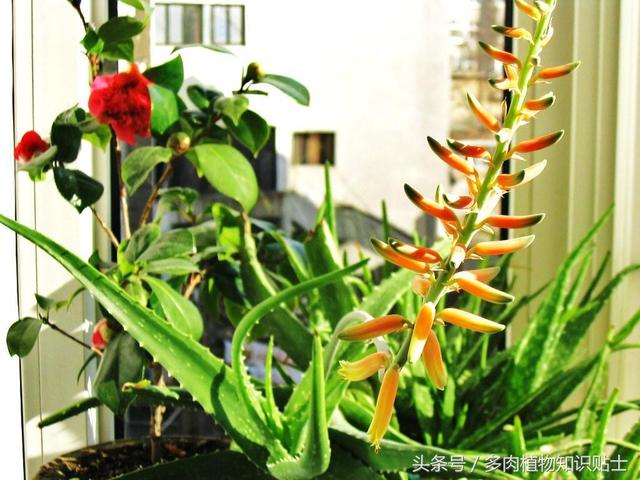
All right, now let's introduce the pollination methods of Aloe vera. I would like to ask the great gods for advice on what I said wrong. Some friends here will certainly ask, why can't aloe pollination refer to the pollination method of the genus Reed? The answer is simple, because Reed is pollinated by hummingbirds, while aloe is pollinated by insects.
The genus aloe is pollinated by insects, so the stamens will mature first and protrude from the petals. (to say here, the pollen of aloe and tile Reed is much more than that of most of the genus Aloe, of course, there are many varieties of aloe, it is impossible to generalize that there may also be varieties with smaller stamens. After a period of time after the stamens mature, the pistil will mature, and the pistil maturity will also protrude from the petals, which means that pollination can be carried out, instead of pollination within 2-3 days after flowering, as the genus Reed is pollinated by hummingbirds, so neither the pistil nor the stamen protrudes the petals after maturation, while aloe is pollinated by insects and protrudes the petals after the stamens mature. Facilitate insect pollination.
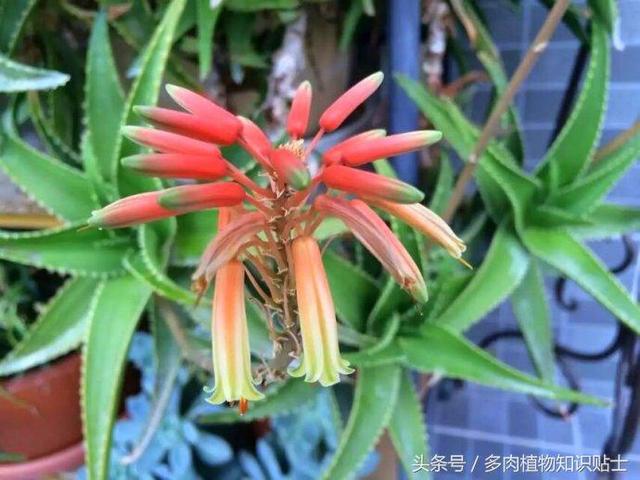
Of course, aloe and tile Reed have the same characteristic that they cannot pollinate themselves and themselves, which is what we often call self-pollination. Because most aloe varieties have abundant stamens and pollen, and the pistil protrudes actively, we don't have to peel off the petals and then pollinate the pistil, as we do in the genus Aloe. You can use a brush to collect stamen pollen to pollinate the pistil, or you can point the stamen and pistil directly with the aloe flower. Specific methods look at personal preferences ~ about three days after successful pollination, the unsuccessful flowers will wither, the successfully pollinated ovary will begin to expand, and the seed clip will break the petals in about a week to two weeks. I personally feel that the maturity of aloe seed clip will be slower than that of tile Reed. I confirmed that the successful pollination aloe seed clip on the 31st of last month has not collapsed yet, almost three weeks. Perhaps it is because the temperature is not high on cloudy and rainy days in recent weeks, so the species matures slowly, and I dare not say casually about the specific reasons.
Let's talk about sowing. I think the sowing of the genus Aloe can be seen in the genus Aloe, and there are not a few fine products sown in the forum. I think we can add a little more fertile plants such as peat on the basis of sowing and matching soil. Personally, compared with the genus Aloe, aloe does not have that high requirement for root gas cycle, so we can add a little more peat to increase the growth rate of aloe seedlings.
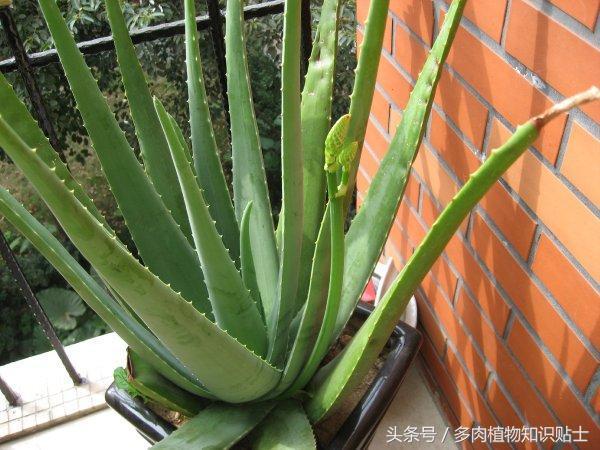
Finally, the differences of flowering and pollination between Reed and aloe are summarized.
1. The genus Phragmites is pollinated by hummingbirds, and the stamens do not protrude from the petals after maturity. Aloe is pollinated by insects. The stamen first matures and protrudes from the petals, and then the pistil matures and protrudes from the petals.
2. Compared with the genus Aloe, the pollen of the genus Aloe is relatively less, the direct use of stamens to the pistil can not waste pollen, and the pollen of the genus Aloe can use tools such as small brushes, of course, it can also be pointed directly.
3. The flowering of the genus Phragmites is to form a flower bone flower, the top flower bone flower of the flower arrow will slowly form, and most of the aloe genus will first form a lot of flower bone flowers, even the whole flower arrow will be formed, and then blossom in turn.
4. There is a general rule of flowering every year. For example, Kangping, which is the earliest to bloom, blossoms around April, and relatively late ones like Crab, Vientiane, and Kangping are about two months apart, and most of them bloom in spring. The flowering of some varieties of aloe mostly depends on the environment, as long as the environment is suitable for flowering several times a year. Regardless of spring and autumn, one aloe I raised blossomed twice last autumn and once this spring.
5. Welcome to add (thanks for the material of w235761289)
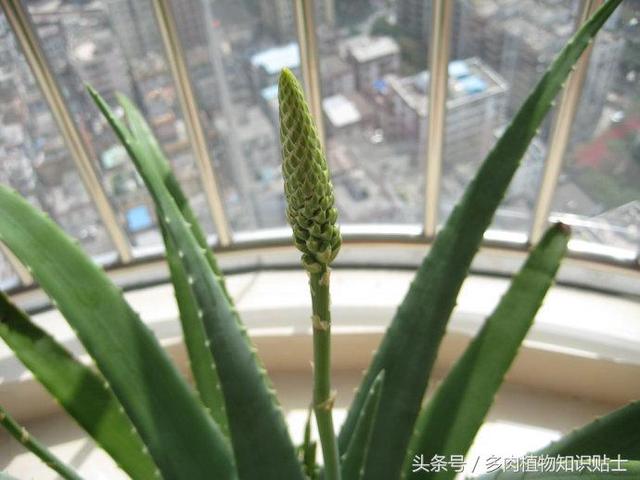
- Prev
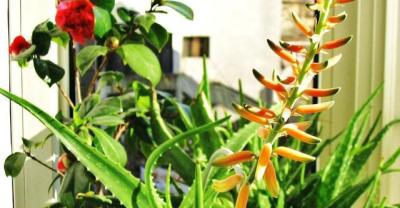
The most cost-effective plant pesticides and flowerpots, those who don't know are embarrassed to say they play gardening.
I shared with you some steps of the northern garden for winter. Friends who have gardens, have you done it yet? In fact, whether it is a garden or a home.
- Next

The small balcony satisfies all my gardening dreams and teaches you how to build a balcony garden.
Growing flowers is a patient and meticulous job that requires interest. It takes several years to practice. It is recommended to try several kinds first, not taking up too much energy or investing too much money, and then.
Related
- Wuhan Hospital Iron Tree Blooming Result Was Instantly Frightened by the Gardener Master
- Which variety of camellia is the most fragrant and best? Which one do you like best?
- What is the small blue coat, the breeding methods and matters needing attention of the succulent plant
- Dormancy time and maintenance management of succulent plants during dormancy
- Minas succulent how to raise, Minas succulent plant pictures
- What are the varieties of winter succulent plants
- How to raise succulent plants in twelve rolls? let's take a look at some experience of breeding twelve rolls.
- Attention should be paid to water control for succulent plants during dormant period (winter and summer)
- Watering experience of twelve rolls of succulent plants
- Techniques for fertilizing succulent plants. An article will let you know how to fertilize succulent plants.

